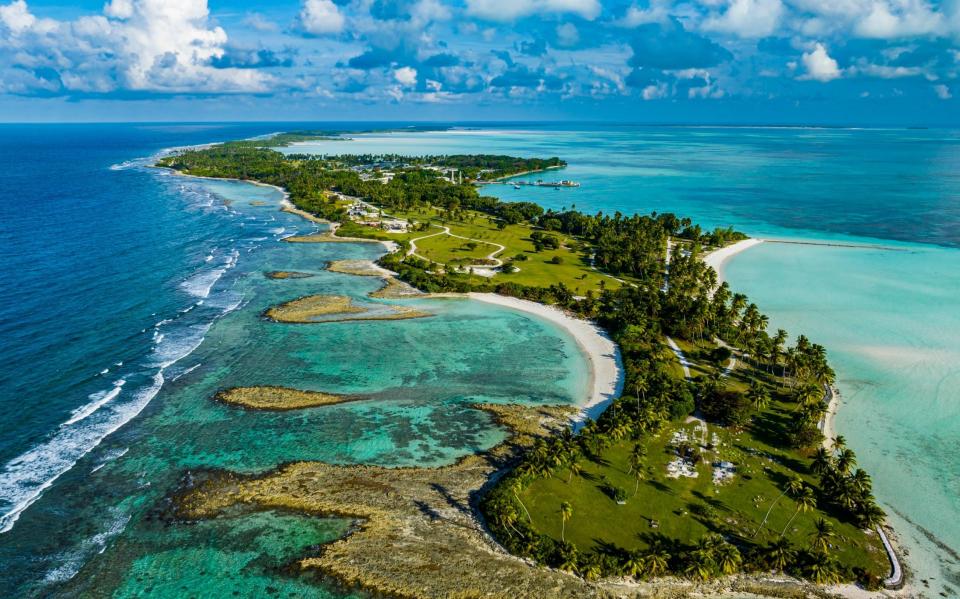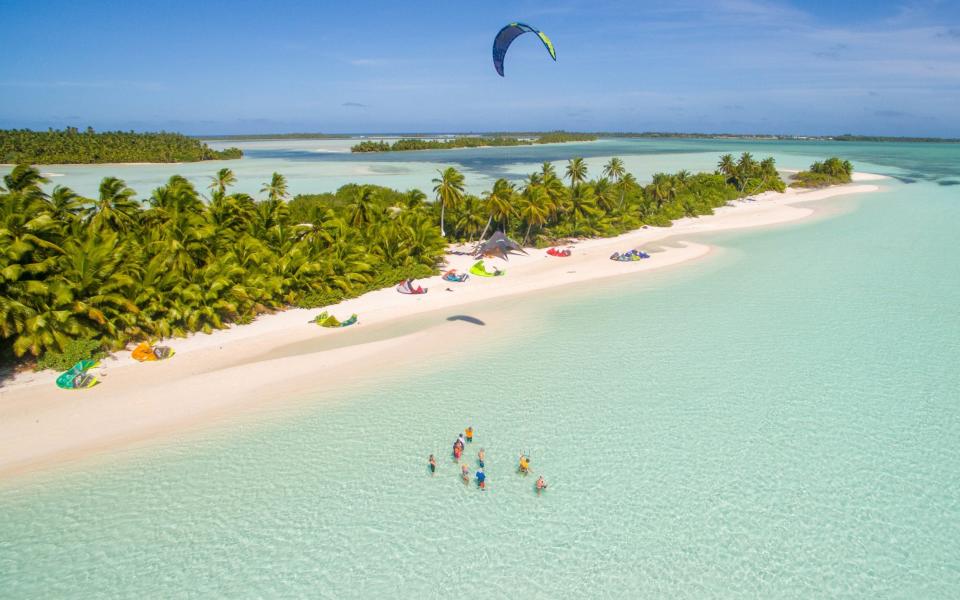Children waved enthusiastically next to the runway as our plane touched down in the Cocos (Keeling) Islands: a small sliver of territory in the remote expanse of the Indian Ocean between Australia and Sri Lanka, made up of two atolls with 27 coral islands. Only two of these islands are inhabited – Home Island and West Island – the latter of which is home to the world’s only nine-hole golf course that plays over an active international airstrip. Golfers tee off between the arrivals of biweekly flights, when planes take government workers, returning residents and – very occasionally – a visitor or two.
The island’s history reads like the plot of a Netflix miniseries. They were discovered by British sea captain William Keeling in 1609, but there was no permanent settlement here until Alexander Hare established one in 1826. Scottish trader John Clunies-Ross took over the copra industry shortly afterwards, turning the islands into a family business. led a fiefdom for over a century, until Australia took power in 1955. The current population consists of approximately 600 Cocos-Malay residents on Home Island, in addition to Australian expats and workers on West Island, with a unique local culture that has Australian, Malaysian and Indonesian influences.

The archipelago’s dual name is the result of a name that has been in constant flux over the centuries – although it has been officially called the Cocos (Keeling) Islands since 1955 – and, like many of its peers in the Indian Ocean, characterized by jade water and pristine white sand beaches lined with dense palm groves.
From the airport I took the 30-minute ferry across the lagoon to Home Island, where I checked in at Oceania House – the former Clunies-Ross farm, now a living museum and hotel run by Greg and Paula Carnell, former cellar master and beekeeper respectively at Somerset’s the Newt. Paula took me on a walking adventure south of Home Island – from Pulo Ampang Major to Pulu Kumbang at low tide – and I asked her what draws people here.
“Cocos is all about connecting,” she told me. “With the people, the ocean, the land, the trees, the birds, the fish; everything here is unique – and the experience of being here changes you forever. It leaves its mark.”
Intrigued, I set out to test her theory.
Despite the archipelago’s small footprint, there is plenty to offer for the few tourists who do visit (in 2023 there were barely 4,000 in total). Several companies offer fishing, surfing, canoe safaris, e-bike tours (led by Johnny, a sixth-generation Clunies-Ross descendant) and kitesurfing, and there are also cultural tours, as well as local attractions such as The Big Barge Art Center and the Wild Coconut Discovery Center, where visitors learn how coconut chips and coconut ice cream are produced.


But it’s the 500 species of fish that live in the lagoon that often take center stage – so I signed myself up for a snorkeling tour of the eastern atoll. The waters were delivered almost immediately. At our first stop, the nursery off Pulu Jabang Island, I had barely submerged my head when a calm reef shark swam past, barely a meter away; then we explored the wreck of the Coal Barge (also known as the Phaeton), a ship that sank in shallow waters in 1889 and is now a refuge for triggerfish, yellowfin tuna and sergeant major damselfish. We ended the day with a picnic at Cossies Beach on Direction Island, considered one of Australia’s most beautiful sandy beaches.


The next day, eager to see more of the lagoon, I joined a guided boat trip with skipper Pete and first mate Amy, heading to the “rip” at Direction Island, where a fast current flows from the outer reef into the lagoon. It was an exhilarating snorkeling experience among vibrant reef fish, with whitetip reef sharks darting around healthy coral and isolated “bommies” – an Australian name for the places where waves break over a shallow reef. I was enchanted.
On my last day, I hopped into a rental car and ventured to Scout Park – on the south side of the West Island – and waded across a waterway to the remote island of Pulu Maraya. Despite a strong current pulling at my reef shoes, I soon reached the famous snorkel drift, where beneath the surface thousands of coral fish swam calmly between the shallow water and the seabed. And then, suddenly, there were two enormous turtles next to me – gliding along in pleasant silence; unfazed. One turned and looked me straight in the eye, and both drifted away as serenely as they had arrived. The Cocos Islands (Keeling) had left their mark.


Essentials
Rebecca Foreman was a guest of Tourism Australia (tourism.australia.com)
How to get there
Flights depart daily from London to Perth and connect via a hub from the Middle East (Emirates, Qatar Airways, Etihad), Asia (Singapore Airlines, Cathay Pacific, Malaysia Airlines) or Australia (Qantas).
Virgin Australia (virginaustralia.com) flies twice a week from Perth International Airport to the Cocos (Keeling) Islands from £582 return. Ferries run regularly and tickets cost £1.30 one way.
Where to stay
Oceania House (cocoskeelingislands.com.au) has double rooms from £122 per night.
What must we do
Cocosday (cocosislandsboatandfishing.com) offers half-day boat trips from £156 per person, and motorized canoe safaris from £88 per person; Cocos Blue Charters (cocosblue.com.au) offers boat trips from £104 per person; Phat Tours Cocos (facebook.com) offers e-bike tours from £26 per person.
Must know
• Women are asked to cover their shoulders and knees when visiting Home Island, out of respect for local Islamic customs
• Connectivity is only available via Wi-Fi, which is typically offered by most properties
• Daily temperatures are between 23 and 33 degrees all year round. Tropical climate with a wet season from December to April and a dry season from May to November